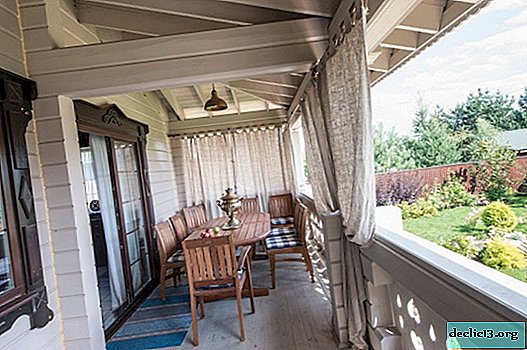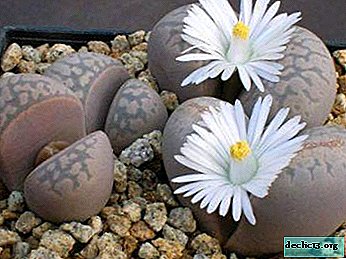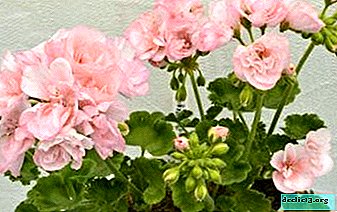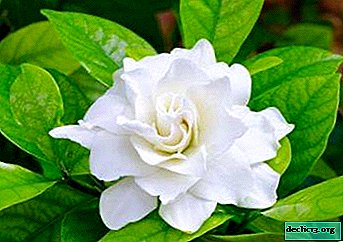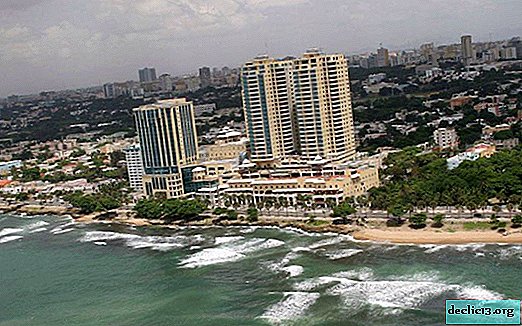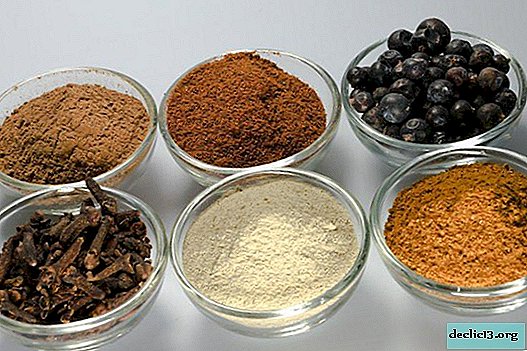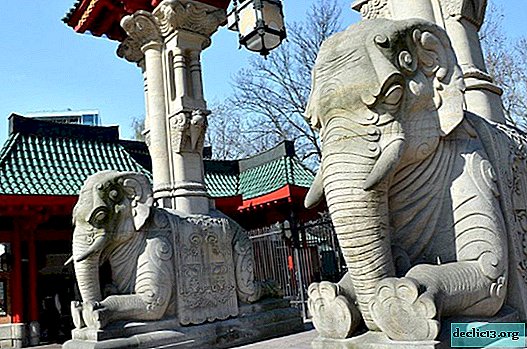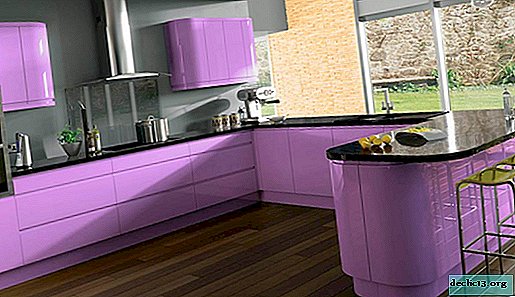Exotic pomegranate is beautiful and unpretentious. Rules for home care
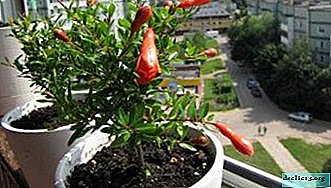
More and more gardeners are growing exotic plants at home. Grenade was no exception. It is simple to care for and does not require special attention. It is enough to follow certain growing rules.
This article will tell you how to care for a pomegranate tree at home, what temperature, place, lighting, pot, watering, pruning, soil, how to feed it, and how to winter it. And what pests and diseases can threaten the health of the flower.
How to care for a pomegranate tree at home?
Temperature
In the spring-summer season, the optimum temperature is 23-27 degrees. In winter, the temperature is lowered to 11-13 degrees, but not lower than 6 degrees of heat. Pomegranates are kept in a cool room for at least 1 month. This contributes to further abundant flowering and fruiting.
A place
The plant at home intensively develops, blooms and bears fruit on the bright southern, southwestern and southeastern window sills. Due to the lack of light, the northern windows do not fit the grenade, where it ceases to bloom and may die at all.
Lighting
The main condition for good pomegranate growth is considered bright lighting. Adult specimens tolerate direct sunlight well. And young plants tame to the sun gradually, leaving them in the light no more than two or three hours a day, while in the afternoon they shade.
Important! In summer, the pot with the plant is taken out to the loggia or to the garden. They are placed in a warm sunny place, but protected from drafts. In autumn and during prolonged cloudy weather in summer, additional illumination of phytolamps is installed in the room. Daylight hours should not be shorter than 12 hours.Pot
Pomegranate pot is suitable from any material. It should be wide, but shallow. When transplanting, increase the diameter of the pot by 2-3 cm, but not more. Flowering will be more abundant if the roots of the plant are closely in the tank.
Watering
 Pomegranate is a drought tolerant plant.. During wintering, it is watered 1 time in 1-1.5 months. With the advent of spring, watering gradually becomes more plentiful and frequent. But the next application of moisture is carried out only after the drying of the upper layer of soil. With the beginning of flowering, watering is reduced, since in the natural environment the plant blooms in the dry period.
Pomegranate is a drought tolerant plant.. During wintering, it is watered 1 time in 1-1.5 months. With the advent of spring, watering gradually becomes more plentiful and frequent. But the next application of moisture is carried out only after the drying of the upper layer of soil. With the beginning of flowering, watering is reduced, since in the natural environment the plant blooms in the dry period.
After the pomegranate fades, abundant watering is resumed. Be sure to drain the top water from the pan. Water for irrigation is taken at room temperature or rain. In the morning and evening on very hot days, pomegranates are sprayed from the spray gun. In this case, make sure that moisture drops do not fall on the flowers. And also periodically the leaves are wiped with a damp sponge from dust. In cool weather, this procedure is not necessary.
Pruning
For active growth and shaping, trim. For this, dry and thickening crown branches are removed. As well as basal shoots. When forming the crown, they are cut to a third of the length of the branches. But leave at least 2-5 pairs of leaves on each branch. A procedure is performed on the kidney, which looks outward so that the branches do not intertwine in the future.
It must be remembered that fruits and buds are formed on the ripened shoots of last year. Therefore, only branches that have already fructified before are removed, and those shoots that stand out from the crown are nipped. Florists recommend trimming twice a year. In the spring, after the appearance of the first leaves, dry branches are removed, and in the fall they form a crown.
We suggest you watch a video about pruning a room pomegranate:
Priming
A loose, nutritious substrate with rich drainage and neutral acidity is suitable for pomegranate. You can cook it yourself. To do this, mix sod, leaf, humus soil and river sand. But soil for roses or begonias is also suitable, which can be purchased at the store.
Attention! For the drainage layer, pebbles or expanded clay are used, they contribute to the removal of excess water.Top dressing
 Fertilize the plant twice a month. In the spring season, nitrogen fertilizers are used, during the flowering period - phosphorus, and in early autumn - potassium. Feeding is better in cloudy weather. They are bred according to the instructions, and introduced only into a moist substrate.
Fertilize the plant twice a month. In the spring season, nitrogen fertilizers are used, during the flowering period - phosphorus, and in early autumn - potassium. Feeding is better in cloudy weather. They are bred according to the instructions, and introduced only into a moist substrate.
If you grow pomegranate for the sake of fruits, flower growers recommend fertilizing with organic top dressing. An infusion of mullein diluted with water is well suited. During dormancy, the plant is not fertilized.
Transfer
Young seedlings up to three years old are transplanted annually. Adult specimens every 2-3 years. Carry out the procedure in early spring. The process consists of the following steps:
- A drainage layer is placed in the pot.
- Top with a little fresh soil.
- The plant is carefully removed from the old flowerpot along with a lump of basal soil.
- Put a pomegranate in the middle of a new pot.
- Pour soil into empty places and shake the container a little to fill the voids inside it.
After which they are watered and looked after, like a regular pomegranate.
Reference! Too large grenades are not transplanted; they simply replace the topsoil with a new one.We suggest you watch a video about transplanting a homemade pomegranate:
Wintering
Pomegranate needs rest, like most plants. This period begins with him in late November - early December, when he sheds leaves. Therefore, since October, watering and fertilizing have been gradually reduced. At the first signs of leaf flying around, the plant is rearranged in a cool place, where the temperature is 11-13 degrees. Such a room may be a glazed loggia or porch. If there is no such place, then the grenades are rearranged closer to the glass window and covered with polyethylene.
Watering is carried out on the third day after drying of the top soil layer. Top dressing does not make. In the cold, pomegranates are kept until February, after which they are rearranged in a warm, well-lit room and taken care of as usual. Young plants under 3 years of age are not required to rest, they can winter in a warm place, it is enough to provide them with 12-hour lighting using phytolamps.
Plant photo
Further on the photo you can see a pomegranate tree.



Diseases and Pests
Pomegranate is rarely attacked by pests and various diseases, but with improper care the following problems may occur:
- Spotting due to excessive heavy watering. The plant is transplanted, while inspecting the roots for rot. Damaged places are cut and sprinkled with crushed coal.
- Powdery mildew. Appears due to poor conditions. To get rid of, use the preparations "Skor" or "Topaz", or in case of a weak lesion they spray it with a weak solution of soda with soap.
- Branch cancer. The crust cracks, and swellings appear along the edges of the cracks. To get rid, remove damaged areas with a sharp knife and keep the plant warm.
- Whitefly, aphid or scale attack. The leaves are treated with soapy water or with strong infection with the Confidor, Mospilan and Aktara insecticides.
Pomegranate is an amazing exotic plant that a beginner grower can grow. It is easy to maintain at home without much effort. It is enough to provide it with a rest period, bright light, water and feed on time. And then he will decorate any interior with his decorative look and flowering.
Useful video
We suggest you watch a video about growing indoor pomegranate:

